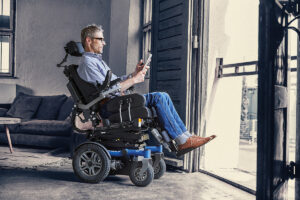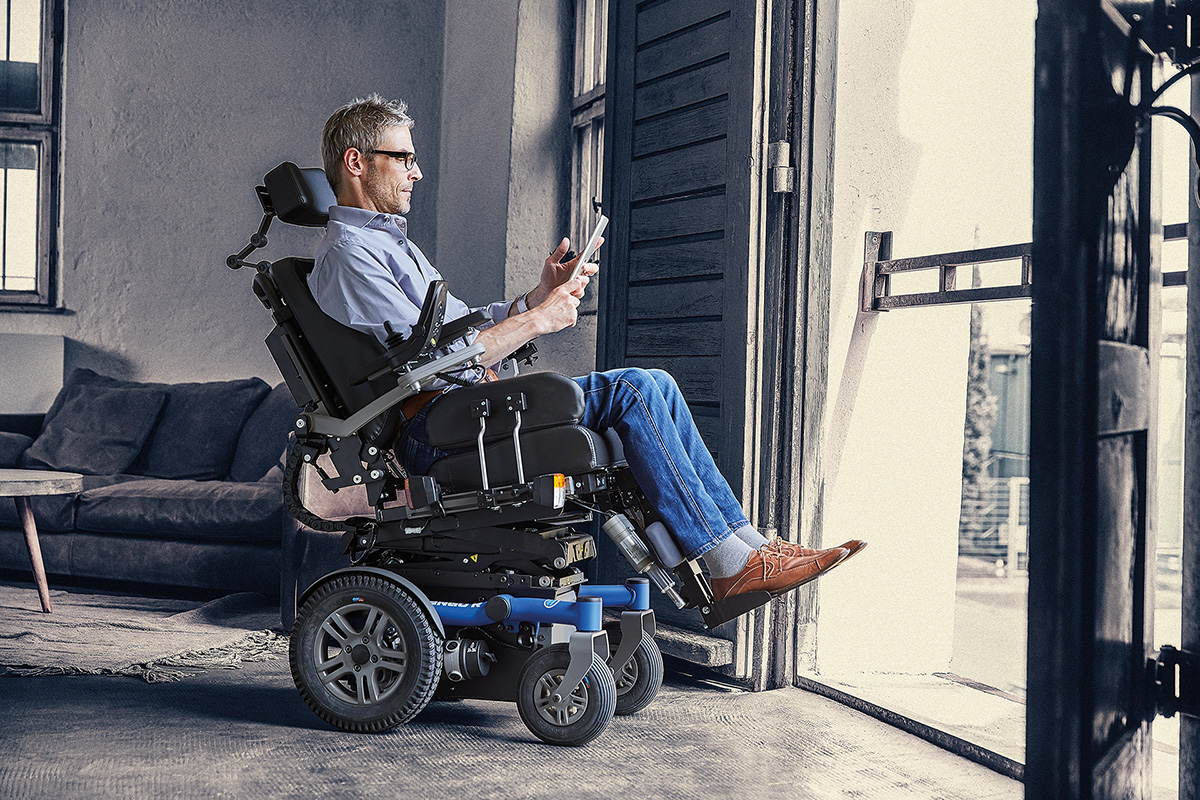When you are looking to choose a new electric wheelchair the amount of choice and information available can often be daunting. Even as a starting point some may refer to an electric wheelchair as a powered wheelchair (often shortened to powerchair) or even as a motorised wheelchair.
Then there can be a lot of weird jargon and acronyms to try to understand and digest.
Finding a knowledgeable, experienced and trustworthy supplier is an often surprisingly difficult task too.
To try and help with choosing the best electric wheelchair for you, there are 10 essential questions you need to ask yourself before approaching a supplier to purchase one from:
1/ Where will you use the electric wheelchair?
INDOOR
Often more compact and basic, these chairs are designed for being used in the house, office or school. They aren’t tested for outdoor use and smaller battery sizes mean that any outdoor use would be very limited. Most models will offer some form of removable parts so that the chair can be transported in the boot of a car for trips to the shops.
INDOOR / OUTDOOR
Like an indoor only chair these chairs will often be more compact to allow for more ease of use in tighter environments, however they will have been tested for outdoor use and have features that will enhance the experience when out and about. This would typically be suspension to make the ride more comfortable and sometimes larger batteries to extend the range that can be driven between charges.
OUTDOOR / INDOOR
This type of chair will be designed for more predominantly outdoor use and will often have a wider chassis width to offer more stability and comfort, whilst still remaining reasonably compact for when it’s being used indoors. Enhanced suspension, larger batteries and faster speeds are usually available for these models.
OUTDOOR / ALL TERRAIN
Off-road chairs will typically take most of the features of an outdoor / indoor chair and enhance them further to make it more suitable to use over rougher terrains. Extra suspension points, upgraded power modules and increased wheel sizes allow for a better experience but do often mean the chassis will be wider and longer than other types of chairs.
2/ What chassis type might suit me best?
MID WHEEL DRIVE (MWD)
The drive wheels are directly under the user in the centre of the chassis, with two castors wheels in front and (conventionally) a further two behind. Often found to be the most intuitive to drive and allows for the tightest turning circle. The front and rear castors also provide further stability. In some instances when using on uneven terrain or steep ramps the front or rear castors can cause the drive wheel to lift off the ground and lose traction.
REAR WHEEL DRIVE (RWD)
The drive wheels are at the rear of the chassis with two castors at the front. This offers a very stable base and straight line driving, particularly at higher speeds. In some indoor environments this may not be the best option as it has the largest turning circle when fitted with swing away leg rests.
FRONT WHEEL DRIVE (FWD)
The drive wheels are at the front of the chassis with two castors at the rear. Having larger wheels at the front can offer much smoother obstacle climbing and also copes better if there is more weight distributed towards the front of the chair. With the majority of the chair ‘behind’ the user it can take a longer time for finding the drive as intuitive as the other options. Modern (gyro) technology has meant you can now have a FWD chair that feels very stable to drive.
3/ What chassis size do I need?
WIDTH
There are a variety of chassis widths available for power chairs and a number of factors to be considered. Firstly, where the chair will be used predominantly and whether there are any width restricting factors, i.e., width of doorways. Things like battery size, seat width and drive wheel size can also have a deciding factor on how compact or how large a chassis might be.
LENGTH
The length of a powerchair can vary to some degree. Most chassis will have a similar overall length due to how stable they need to be. The one thing that can change the overall length is the style and angle of leg rests required.
4/ Which type of suspension is best for me?
GAS SPRING/SHOCK ABSORBER
Designed to limit shock and withstand external forces. Gives benefits when climbing or descending large kerbs. Offers a stiffer ride experience. Benefits are lost if gas leaks from the cylinder and can be expensive to replace. Can be noisy with many moving parts.
RUBBER
Absorbs both shock from larger obstacles and vibration from everyday uneven terrain. Offers a much quieter and smoother ride. Can be more limited for descending large kerbs on MWD chairs.
5/ Will the weight of the chair need to be considered?
PRODUCT WEIGHT
Conventional chairs can weigh anywhere from 80 to 200kg. The weight of the chair should be considered if it will be hoisted into a vehicle or needs to be used in domestic lifts.
OPTIONS
The overall chair weight is ultimately governed by the selection of additional options to the standard offering. The heaviest component tends to be the batteries (depending on capacity selected). Powered seating options such as seat lift/seat tilt quickly add weight and complex/rehab seating can be surprisingly heavy.
6/ What speed would I like the chair to go?
TOP SPEEDS (MPH)
In the UK chairs are generally available in 3 “top” speeds: 4, 6 or 8mph. You can however start with a 6mph chair and edit the program to govern its top speed. This can be useful for children where you may want to govern speed initially but allow faster speeds as they progress.
6mph (and above) chairs sold in the UK must have compliant lighting and a rear view mirror to be considered legal for use on the roads.
7/ How far do I need to be able to drive the chair?
BATTERY SIZES
Battery capacity (in ah) is generally linked to its physical size. This is then governed by the ability of the chosen chair to accommodate the physical dimensions of the battery. Narrow chairs tend to have capacity ranging from 35ah to 60ah. Conventional width chairs usually have 50ah up to 100ah capacity.
BATTERY RANGE
Range is directly liked to battery capacity. It is very difficult to put an exact figure on range as everyone uses their chair differently. For example, driving at full speed in a straight line is much more efficient than driving indoors with lots of turning on the spot etc.
You can expect range from 8 miles to 30 miles but there are many variables. It is always worth considering getting the biggest capacity battery that your chair can accommodate.
8/ What electronics will I need for my chosen options?
BASIC CONTROLS
Basic controls are usually found on lower specification chairs. They may be ‘drive’ only or have the option to operate a couple of actuators such as a back recline or seat tilt. These are usually found on 4mph chairs and below.
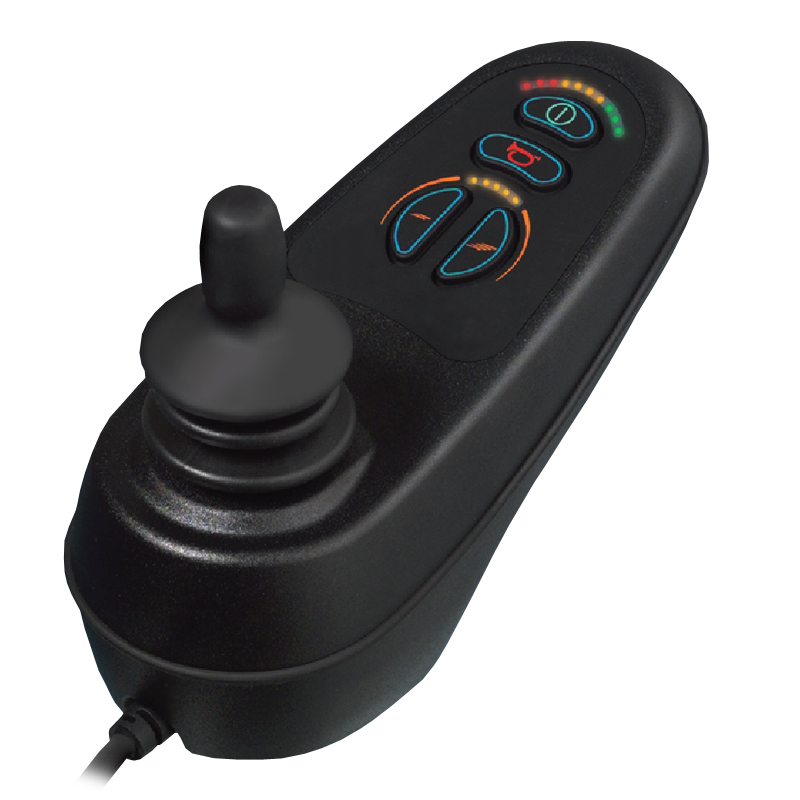
ADVANCED CONTROLS
Advanced controls are usually found on higher specification or rehab electric wheelchairs. They are often modular systems which means components can be added or removed as conditional needs of the user change. They are capable of operating many actuators and can control Bluetooth and infra-red based devices as well as some environmental controls.
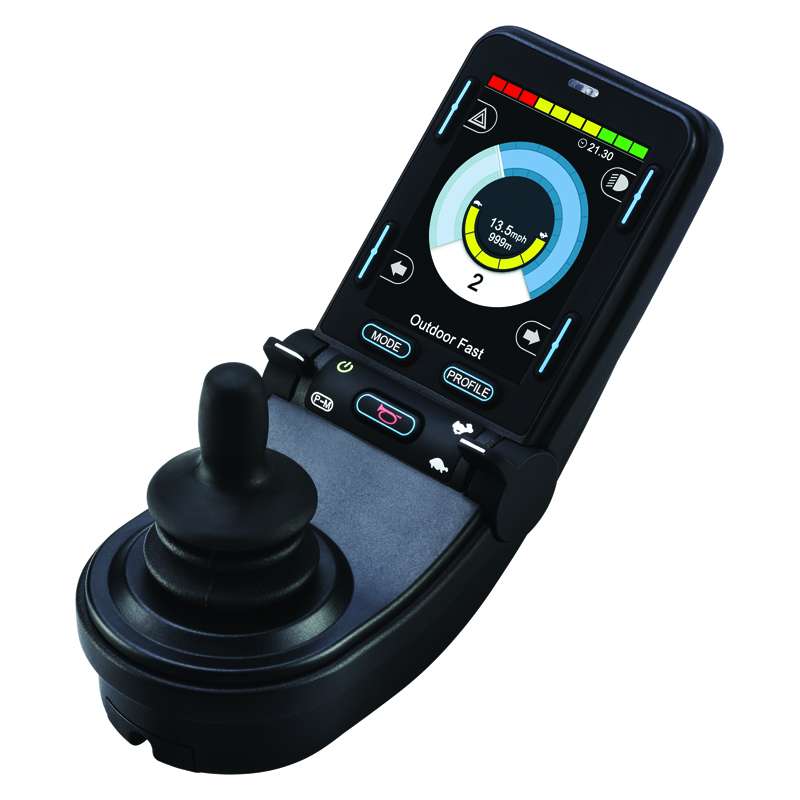
ATTENDANT CONTROLS
An attendant control is a device operated not by the user of the chair but by a third party. Historically these controls have been a standard or compact version of a joystick mounted usually at the rear of the chair. They are a compromise though and are not always intuitive to use.
There are now a couple of extremely intuitive controls available, and these offer excellent functionality and full control of the chair. They require minimum training time and are a great alternative to standard attendant controls for multiple carer environments.
SPECIAL CONTROLS
Special controls is a wide ranging term. Any device that isn’t a standard joystick tends to fit under the umbrella. It could be a low force/low throw joystick for a user with a condition such as Motor Neurone Disease or perhaps a head control system for a user that has suffered a spinal cord injury. With vast amounts of options, it is possible to be very open minded and it is almost always possible to create a solution for a user to operate their chair if cognitive abilities allow.

9/ Would I like to have or need some powered seating options?
RECLINE / BIOMECHANICAL RECLINE
A powered backrest recline allows the angle of the backrest to be adjusted via the chairs joystick or control system. Usually available in varying amounts of potential recline. Used primarily to manage comfort it can help with posture control also. Available in conventional and bio-mechanical/anti-shear formats. Bio-mechanical is best considered when used regularly and or with items like thoracic supports as it keeps such items in an anatomically correct position when reclining.
POSTERIOR / ANTERIOR TILT
Perhaps the most popular of powered options is seat tilt. Available in a basic fixed pivot tilt or the much superior centre of gravity shift motion. Available in varying amounts of posterior tilt, it is widely acknowledged that 45⁰ is the minimum amount of tilt required for effective pressure care. If just being used for functional purposes, then 30⁰ is often seen. Some chairs offer an option for anterior tilt which can allow easier standing transfers or perhaps reaching into a cupboard etc.
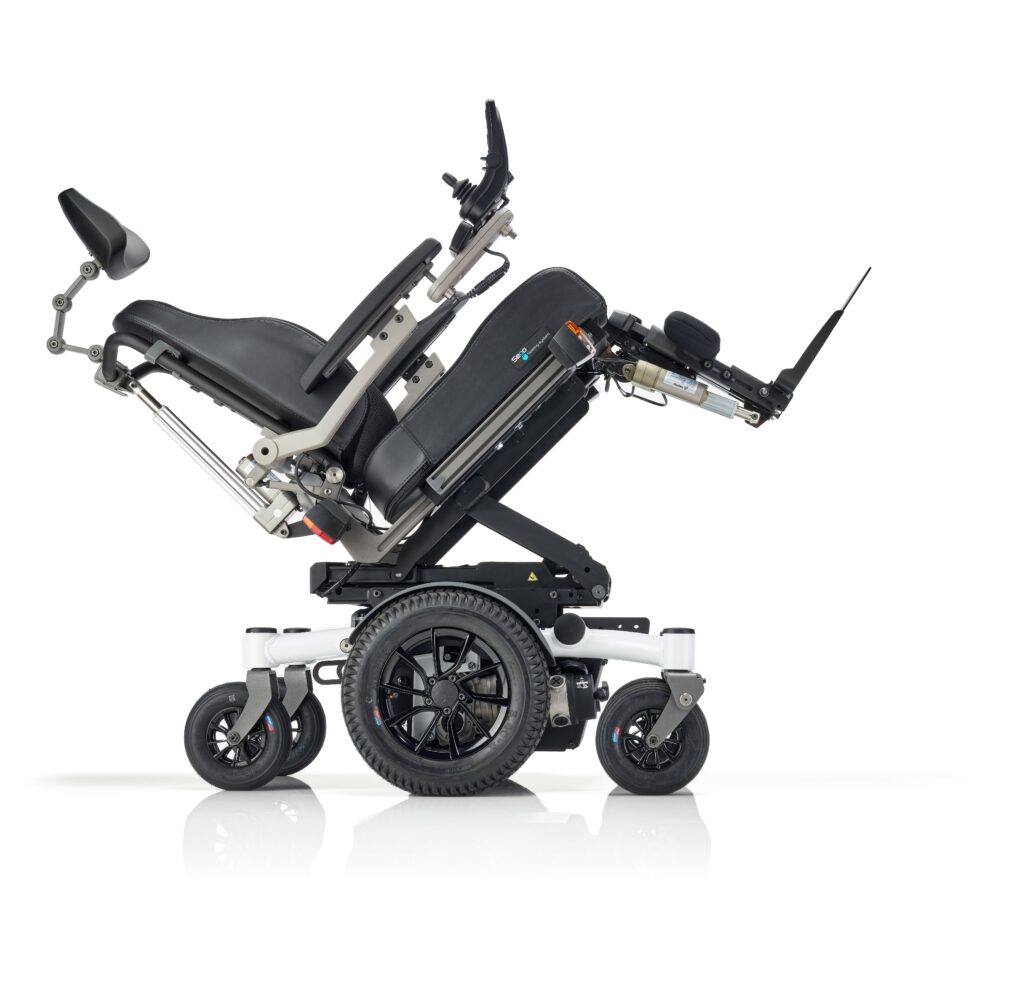
LIFT
Powered seat lifters are a widely used option. Usually offering up to 30cm of vertical lift it offers great social interaction benefits but also great functional possibilities especially when living an independent life. It could be something as simple as being able to reach an item on a supermarket shelf or being able to raise your seat so you can see above the crowd at a concert. Chairs can usually still drive with the seat elevated albeit at a reduced speed for safety reasons.
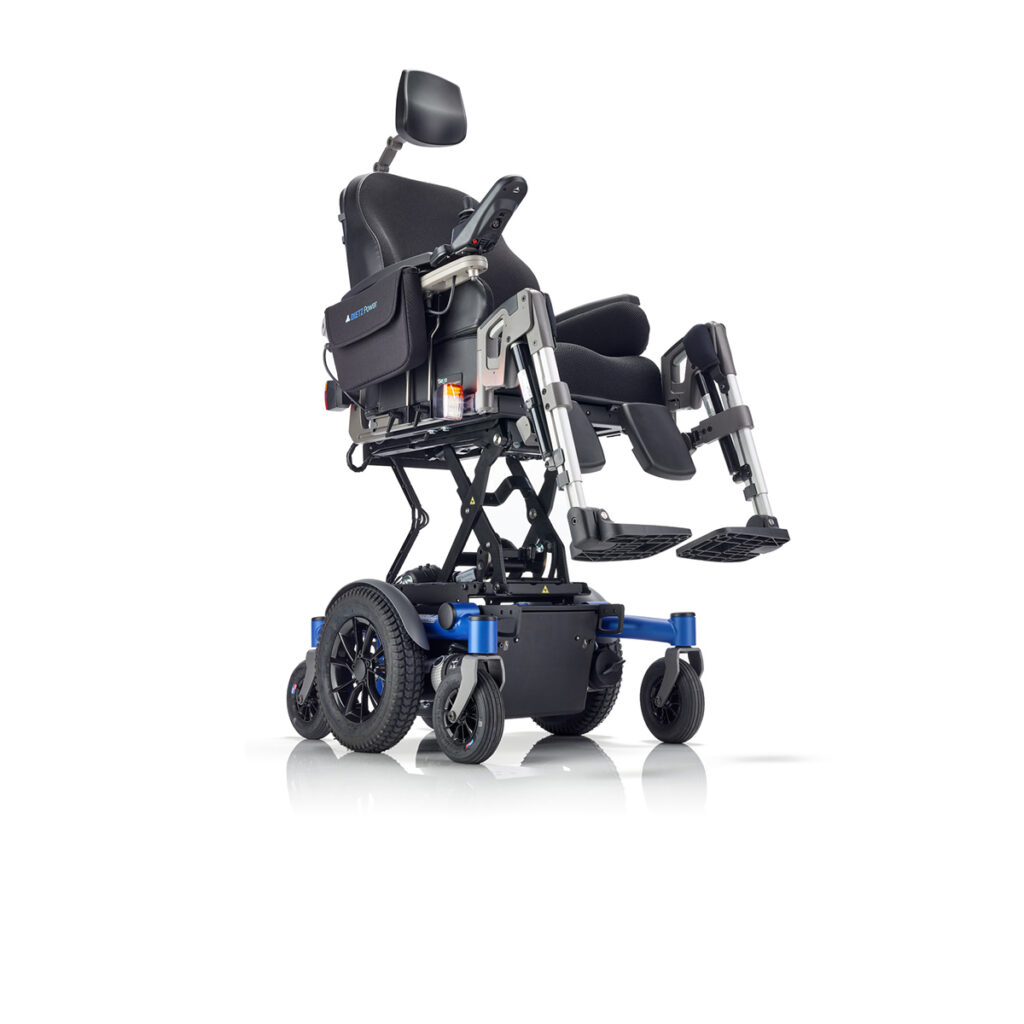
LEGRESTS / FOOTPLATES
Powered leg rests (swing away or centre mount) are a great option for allowing a user to adjust their position for perhaps comfort reasons or for managing oedemas legs. Swing away leg rests allow independent control of each leg however chairs are more compact when used with a centre mount leg rest setup.
10/ How will I need to transport my chair or be transported in my chair?
OCCUPANT
If you wish to travel in a vehicle whilst seated in your chair you must ensure that your chair meets the crash test requirements of ISO 7176-19. You should also ensure that a suitable head restraint is fitted to the chair when in transit or that provision for head restraint is made as part of the vehicle structure.
Generally, chairs are secured using 4 point tie down brackets and straps that secure the chair to the vehicle floor. For greater convenience you could use a vehicle docking system instead that removes the need for traditional straps. These are usually a 2 part system with one part fitted in the vehicle and the other on the chair. Various docking systems are available, and you should ensure that your chosen wheelchair is compatible with your choice of docking system.
DRIVE FROM
A popular option for independent living is drive from vehicles. With the use of a docking system a user is able to drive their vehicle from a power chair. It is always advisable to select your wheelchair before choosing a vehicle though as not all chairs work well in all vehicles. You should ensure that your chosen chair is crash tested and that your choice of docking system is compatible with both vehicle and chair. Another important consideration here is the seat to floor height of your chair, you need it to be low enough to allow easy access into the vehicle and to allow a good line of sight underneath the roofline of the vehicle. Too tall and your vision will be adversely affected.
HOISTING
For those chair users that are able to transfer from chair to vehicle there are options such as hoists. These allow you to transport your chair in the boot of your vehicle. The hoist would usually be mounted on the rear wheel arch area of your car. Brackets would be fitted onto your chair, and you would pick the chair up with the hoist and swing it into the vehicle. Hoists come with a maximum weight capacity, so it is critical that your chair comes within the design limit of your hoist.
I hope that these questions have given you a starting point towards understanding more about electric wheelchairs and some of the things to consider before purchasing. Of course, there are many individual needs and factors that may also need to be thought about and discussed, so please feel free to get in touch here and one of our Product Specialists will contact you to answer any of your questions.

